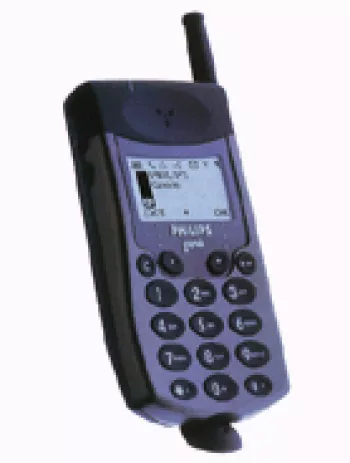
Release Date
2002
Camera
NO
Storage
No card slot
Operating System
Feature phone
Overview of Philips Fisio 625
The Philips Fisio 625, launched in 2002, is a feature phone that marked its existence in the early 2000s mobile market. As an affordable option popular during its time, this model reflects a period when mobile phones were primarily used for calls and basic messaging. While it lacks today's smart capabilities, it was well-regarded for its simplicity and efficiency.
Network and Connectivity
- Technology: This device operates on GSM technology, specifically on the 900/1800 MHz bands, which were common in many countries at the time, facilitating widespread connectivity.
- GPRS: It supports Class 10 GPRS, allowing for basic data transmission suitable for WAP browsing and basic email functions.
- EDGE: Not supported, which means internet access was quite limited in speed and bandwidth.
Launch and Market Positioning
- Announced: The Philips Fisio 625 was announced in 2002, positioned as a mid-range phone appealing to users looking for a reliable communication tool.
- Status: Discontinued; While no longer available in the market, it remains a nostalgic model for those who used it.
Body and Design
- Dimensions: It measures 104 x 46 x 20 mm, providing compactness and portability.
- Weight: At 85 grams, the phone is lightweight, making it convenient for one-handed use.
- SIM: Uses a Mini-SIM card, standard for its time.
Display Features
- Type: The display is of the graphic type, supporting basic text and interface graphics.
- Resolution: 101 x 80 pixels, showing up to 8 lines of text, providing a clear view of text messages and menus.
Memory and Storage
- Card Slot: No additional memory card slot is available, limiting storage to internal capabilities only.
- Phonebook: Can store up to 300 entries, which was adequate for average users at the time.
- Call Records: Records the last 10 dialed, received, and missed calls, allowing users to quickly redial frequent contacts.
Sound and Alerts
- Loudspeaker: No loudspeaker capability; audio output is strictly via the earpiece.
- Alert Types: Supports vibration alerts and downloadable monophonic ringtones, offering basic customization for incoming call alerts.
- 3.5mm Jack: Absent, which means proprietary headsets are necessary for private listening.
Communication Features
- WLAN: Not supported, reflective of its era before widespread Wi-Fi adoption on phones.
- Bluetooth: No Bluetooth capability, limiting wireless connectivity options.
- Positioning and Radio: Neither GPS positioning nor FM radio features are provided, keeping the device focused primarily on basic telephony.
Additional Features
- Messaging: Supports SMS and email, catching up with the essentials of text-based communication.
- Browser: The included WAP 1.2.1 browser enables rudimentary web browsing, mostly text-based.
- Organizer: Includes clock and alarm functionalities, enhancing its utility as a daily organizational tool.
- Games: Comes preloaded with basic games which were typical during this period.
Battery Performance
- Type: Equipped with a removable Li-Ion battery, allowing users to replace it easily when necessary.
- Stand-by Time: Offers up to 330 hours, giving it a long life on standby mode.
- Talk Time: Provides approximately 5 hours of continuous talk time, which was competitive at the time.
Aesthetic and User Experience
- Colors: Offered in a range of colors, although specific options are not documented, allowing users some degree of personalization.
- User Interface: The simple and intuitive interface matched the design goals for ease of use and accessibility for various user demographics.
Conclusion
The Philips Fisio 625 reflects a bygone era of mobile technology, where functionality and simplicity were key. Despite its basic feature set compared to modern smartphones, it served its purpose as a reliable communication device. Its legacy endures as a representation of early 2000s mobile technology and innovation.
Key Features of Philips Fisio 625
- GSM Technology for reliable connectivity
- Compact dimensions: 104 x 46 x 20 mm
- Lightweight design: 85 g
- Mini-SIM support
- Graphics display with resolution of 101 x 80 pixels
- Capacity to store 300 phonebook entries with Photo call feature
- Ability to log 10 dialed, 10 received, and 10 missed calls
- Vibration and downloadable monophonic ringtones for alerts
- Support for SMS and Email messaging
- Built-in WAP 1.2.1 browser
- Includes clock and alarm functions
- Pre-installed games
- Removable Li-Ion battery with 330 hours standby and 5 hours talk time
Disadvantages of Philips Fisio 625
- Outdated GSM technology with no support for modern networks.
- Low-resolution display with 101 x 80 pixels and limited to 8 lines.
- No EDGE support for faster data transfer.
- Limited phonebook capacity with only 300 entries.
- Lacks a camera feature entirely.
- No loudspeaker functionality.
- Absence of a 3.5mm audio jack for headphones.
- No support for Bluetooth or WLAN connectivity.
- Lacks built-in GPS positioning.
- No FM radio feature available.
- Limited browser capability with only WAP 1.2.1.
- No Java support for running applications.

View Also
View Also
More Phones
More Phones
All Rights Reserved +14266 Phones © Mobilawy 2025

























